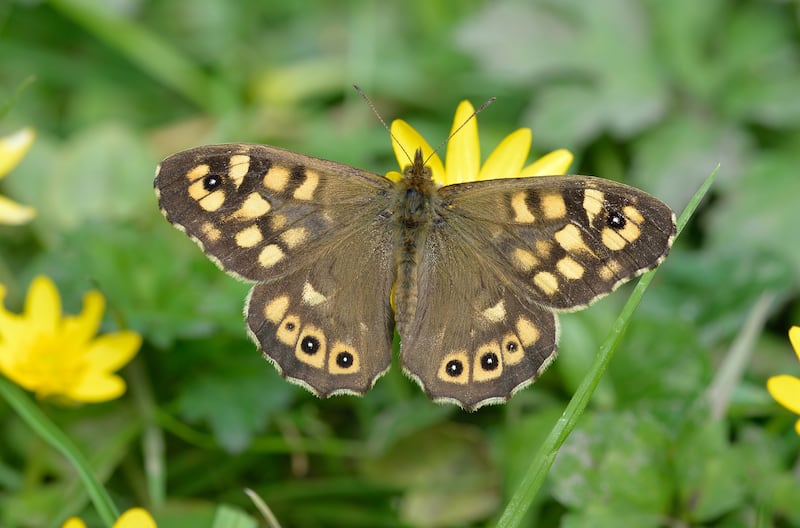People are being urged to take part in an annual citizen science project to count UK butterflies after they have struggled in disastrous spring weather.
TV presenter and naturalist Chris Packham said taking part in wildlife charity Butterfly Conservation’s Big Butterfly Count could help provide vital research into the impacts of climate change on wildlife.
The call for members of the public to take part in the annual count, which takes place over the next three weeks, comes in the wake of an unseasonably cold and wet spring, which conservationists said had hit butterflies.

Butterfly Conservation said its current records show many species of butterflies have had a poor spring or a delay in their emergence following this year’s unseasonably cold and wet weather.
There have been particularly low numbers of speckled wood butterflies, while small tortoiseshells, commas, green-veined whites, large whites and red admirals are also down on their 10-year average, the charity said.
Though April was the sunniest on record, it was also cold, with a record number of frosts, while May was the wettest for 50 years, and Butterfly Conservation said it needs the public’s help to measure the impact on butterflies and moths.
Conservationists warn that the UK is experiencing an increasing number of extreme weather events as a likely consequence of climate change, and they want to learn more about the effects on native butterflies to understand the long-term impacts on nature or biodiversity.
To take part in the Big Butterfly Count, people just need to spend 15 minutes in an outdoor space, counting the number and type of butterflies, and some day-flying moths, they see.
Wildlife broadcaster Packham, who is vice-president of Butterfly Conservation, said: “Biodiversity and climate crisis is an urgent issue and it can be overwhelming to think about what we can do as individuals to really make a difference.
“Because butterflies and moths make excellent indicators of the impacts of climate change and other human environmental factors, collecting data on their numbers is really important.

“So, something as simple as recording a butterfly spotted in your garden, at your local park or on your window box can play a part in vital research into a global problem. It’s a really valuable contribution everyone can make.”
Dr Zoe Randle, senior surveys officer at Butterfly Conservation, said the Big Butterfly Count, along with other research work, is already showing changes in the populations of butterflies and moths.
“Climate change and other human-led impacts are causing some species to be found in new areas, while others are becoming harder to find in the UK at all,” she said.
The Jersey tiger, a striking moth which flies during the day as well as the night, appears in this year’s Big Butterfly Count identification chart for the first time, as the species has become well established along the south coast of England but is moving further north and is now being found in increasing numbers in London.

Last year more than 145,000 counts were submitted to the Big Butterfly Count, a record for the scheme, but 2020 saw the lowest average number of butterflies logged since it began 12 years ago, and the charity’s scientists want to see if that trend continues in 2021.
Dr Randle added: “We really need the public’s help to understand what is happening to our butterfly and moth populations. It’s a small but crucial thing everyone can do.
“This information will not only help us to protect these species, but also to inform what effect the changing climate is having on our biodiversity.”
This year’s Big Butterfly Count, sponsored by Vivara and the DFN Foundation, is being launched at Winchester Science Centre, which neighbours Butterfly Conservation’s Magdalen Hill Down nature reserve, and runs nationwide from July 16 to August 8.
– For more information and to take part people can visit https://bigbutterflycount.butterfly-conservation.org/ or download the free Big Butterfly Count app.








